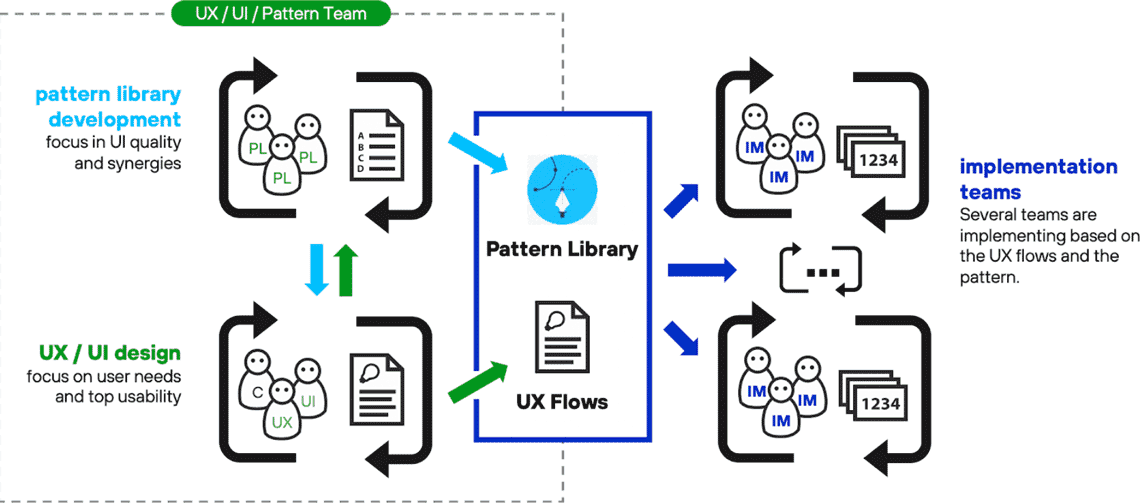Top Fintech trends 2025: The roadmap to smarter financial solutions
Embrace the top fintech trends 2025: from embedded finance to Amazonization, learn how financial service companies make smart decisions for a better future.

What the big Internet companies have shown also holds true now for banks and insurers: They have to gear their online services increasingly more to the wishes of their customers. The aim is to achieve the most positive “customer experience” possible. How can this be achieved?
If you seriously want to lose around half of your customers, then you only have to offer them one negative online experience. If you lose around 80 percent, you will have confronted your customers twice with bad customer experience.
For many companies, these are alarming figures. However, they also show how high the chances of digitalization are when it comes to winning and retaining customers. Many managers have understood this: According to the Gartner market research institute, 81 percent of them believe their companies will not only compete solely on price, but increasingly on customer experience.
This, however, is not necessarily the least of their challenges. Websites and apps are the first point of contact between providers and customers – and standards are extremely high here. Pioneers such as Apple, Netflix and Amazon have been setting standards here for many years, and customers are now orienting themselves according to these standards. The digital world is the natural biotope of these companies. This, however, does not apply to the financial sector. In order to meet the increasing demands, banks and insurance companies now need a radical shift in their orientation, something which the internet giants, like most start-ups, have long since anchored in their DNA: The customers must be at the center of attention.
This is far from being the case today – at least in the eyes of the customers: According to the latest CX+ Report for Retail Banking in Germany, only 17 percent of German customers rate their bank as customer-centric.
How can providers improve this? And what constitutes a positive customer experience, anyway?
Studies on customer experience usually come to this conclusion: In order to achieve lasting customer loyalty, customers at each touchpoint must be inspired by a combination of simplicity, speed and good user experience.
This sounds simple, but it has one crucial catch: how do you measure these parameters? Above all, measuring simplicity and good user experience is far from trivial. It pays here to involve customers and develop front-end solutions iteratively according to their feedback. This can be done using the Minimum Viable Product (MVP) approach. This is the first published version of a product or service which, when it is launched, initially only contains a basic range of functions with directly recognizable added value for the customer. Further features will only be implemented once it is clear how the MVP is accepted, which functions are used, and which are idle.
This approach has two main advantages:
In this way, it can be optimally ensured during development that the end product meets the customer’s requirements.
Such an agile approach with MVPs is, however, a major challenge for companies with a historically grown IT infrastructure. In order to enable new systems such as apps or customer websites to exchange data with the (legacy) systems in the backend, a lot of conversion work is required. This is because up to now, criteria such as stability and security have been the main focus (which is right and important). After all, it is the task of these systems to guarantee the smooth running of day-to-day business, and compliance with legal regulations.
This is why they often reflect complex internal processes and organizational dependencies, something which often has negative consequences for the design of services for customers – in other words, for the customer experience.
So, it is precisely the IT infrastructure from earlier waves of digitization which now presents companies with problems for further transformation. A common solution for this is to divide the systems into areas with clearly divided tasks:
Since both “IT worlds” are often very closely interwoven, it helps to separate them. This can be done with the help of a front-end layer or an API gateway between backend and frontend. It releases the rigid connection between the systems on both sides and replaces it with a flexible one. This technology can then serve as an independent development layer on the one hand, and provide interfaces for transferring data of all kinds between the two layers, on the other. In this way, systems in the background remain untouched, while the frontends intended for customers can be developed much more freely and quickly.
Usability, consistency and scalability are the three most important elements companies should focus on when developing new solutions for their customers. So-called pattern libraries are a powerful tool for this. They bring all front-end elements together in a single location (“Single Point of Truth”). In this way, graphical elements such as buttons or even entire menu bars can be used in a wide variety of contexts without much effort. Requirements such as defined behavior on different end devices are also reliably fulfilled.

The use of pattern libraries thus also facilitates extensive projects such as the standardization of different web presences after a company acquisition. Thanks to the reusability of all elements, they make it easy to implement a consistent look and feel on all websites or apps of a brand, as they are always available as a reference for the design and development staff, and simplify communication.
Pattern libraries also offer another major advantage: New employees can be integrated into an ongoing project much more easily.
→ Learn more about Pattern Libraries and why they are brilliant
As requirements are constantly changing, it is even more important to be able to react quickly with tools such as pattern libraries. In this sense, digital products and services are never really “finished”, but always “in development”. Therefore, it is unlikely that a development team who starts a project will finish it in the same constellation.
But even if all the technical requirements are optimally met and the best designers and developers are working on the project, one thing is still needed above all else to achieve success: The unconditional support of top management.
In a study, the Pega Institute examined the status quo of customer experience and came to the conclusion that strong C-level support is still far too seldom the norm, at least in Germany. According to the study, only 34 percent of projects aimed at better customer experience are actively promoted by board members or managing directors. About 30 percent of these projects are at management level or below.
The authors of the study also identify possible consequences of this status quo: From a lack of expertise and management responsibility to doubts among project participants as to the actual importance of the customer experience for their employer. However, if the executive management or board members are involved, the cooperation between “business” and “IT” benefits enormously.
Ready to innovate your business?
We are! Let’s kick-off our journey to success!